 eco-friendly, sustainable DIY products are the need of the time
eco-friendly, sustainable DIY products are the need of the time
Introduction:
Sustainable living has never needed more of a push. With environmental concerns at the forefront of world concern, it is time to welcome reforms that will benefit our world.
Making sustainable, environmentally friendly do-it-yourself goods at home is one great way to help. This not only reduces your carbon footprint but also gives commonplace objects a personalized touch. We will look at thirty incredible, easy-to-make, environmentally friendly do-it-yourself projects in this book.
What are eco-friendly and sustainable products:
An eco-friendly product is one that, in its manufacture, usage, or disposal, does not damage the ecology or environment. It doesn’t add to pollution of the air, water, or land and is frequently constructed of natural materials.
Items of eco-friendly design include garments made of linen, hemp, wool, and other natural materials, and toys made entirely of wood.
Conversely, a sustainable product offers advantages for the environment, society, and economy all the way through its life cycle—from the extraction of raw materials to its ultimate disposal.
It must also offer quantifiable enhancements in the performance of socio-ecological products and help to address socio-ecological issues globally. Important traits of environmentally friendly products consist of:
Contentment of the customer
Double emphasis on the relevance to the environment and society
Orientation along life cycles
Notably better socio-ecological performance
Always improving
Competing offers as a standard for ecological and social performance
How can I identify eco-friendly products when shopping online ?
Check for certifications and labels:
Look for certifications like the EU Ecolabel, Fair Trade Certified, and Rainforest Alliance Certified seals. These labels ensure that products meet specific environmental and social standards.
Research the brand:
Research the philosophy and dedication to sustainability of the company. Verify if they have a well defined policy on operating openness and environmental responsibility.
Product Claims and Packaging:
Check for claims like 100% recycled material, sustainable packaging materials, eco-friendly packaging, or green packaging. Ensure that the product itself is eco-friendly, not just the packaging.
Check for official websites and ISO 14024 compliance:
See the certification body’s official website to confirm the legitimacy of labels. Verify if the label meets ISO 14024, the international standard.
Read reviews and feedback:
View other consumers’ reviews and comments to determine the environmental effect of the product and the brand’s dedication to sustainability.
Check for Green Web Hosting:
Make sure the website employs green web hosting, which either uses environmental projects to offset carbon footprints or powers data centers entirely with renewable energy.
Avoid Greenwashing:
Watch out for “greenwashing,” when companies present a positive environmental image while really opposing environmentally favorable methods. Check the environmental certifications of the goods and steer clear of dishonest marketing tactics.
These are easy ways to spot environmentally friendly items when buying online and help create a more sustainable future.
Why eco-friendly products at home
Here are some reasons why:
Reduced Waste:
Making environmentally friendly goods at home will help you to drastically save waste and carbon emissions. This holds particularly true for goods like cleaning supplies and personal care products that are frequently used once and then thrown away.
Cost-Effective:
Crafting environmentally friendly goods at home can be rather affordable. It is less need to utilize costly and resource-intensive commercial products when you can use easily obtained natural materials.
Customization:
You may tailor eco-friendly products to meet your own requirements and tastes when you produce them at home. This guarantees you receive the exact product you desire, free of superfluous chemicals or additives.
Health Benefits:
Serious chemicals included in many commercial products can be harmful to your health. Making environmentally friendly products at home allows you to steer clear of toxic toxins and produce safer goods for your health.
Environmental Impact:
Many times, the manufacture and disposal of commercial goods contribute to environmental contamination. Making environmentally friendly items at home will lessen your environmental impact and help to build a more sustainable future.
Increased Awareness:
Creating eco-friendly goods at home can help you become more conscious of how your daily decisions affect the environment. Living more sustainably and with awareness can result from this.
Community Building:
Creating environmentally sustainable goods at home can also be a socially helpful endeavor. With friends and family, you can impart recipes and methods that foster a feeling of camaraderie and environmental responsibility.
- Some popular eco-friendly products to make at home include:
- Cleaning supplies like all-purpose cleaners and dish soap
- Personal care items like shampoo, conditioner, and body lotion
- Home decor items like candles and planters
- Kitchen items like reusable bags and beeswax wraps
By making eco-friendly products at home, you can live a more sustainable lifestyle, reduce waste, and promote a healthier environment.
45 Eco-Friendly Products You Can Easily Make at Home
1. Reusable Plastic Wrap:

Reusable plastic wrap is an eco-friendly alternative to traditional single-use plastic wrap, designed to minimize environmental impact. Made from materials like silicone or beeswax-infused fabric, these wraps are durable, flexible, and easy to clean.
2. Handy Reusable Produce Bags:
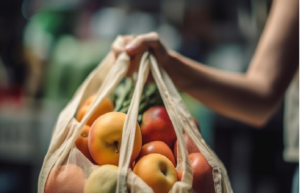
Create reusable bags from organic cotton or other eco-friendly materials to reduce single-use plastic waste.
3. DIY Reusable Beeswax Wraps:
Ditch the plastic wrap and opt for reusable beeswax wraps. These are perfect for covering bowls, wrapping sandwiches, and keeping produce fresh. All you need is some cotton fabric, beeswax pellets, and a few basic kitchen tools.
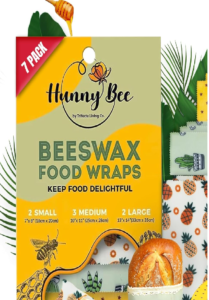
4. Vegan Pet Accessories:
Create pet accessories from plant-based materials, reducing the use of animal products.

5. Pet Toys Made from Recycled Plastic Bottles:
Upcycle plastic bottles into fun and eco-friendly pet toys.

6. Ethical Basics:
Design and manufacture clothing and accessories from sustainable materials, ensuring fair labor practices.

7. Recycled Cotton Clothing:
Use recycled cotton to create clothing that reduces waste and conserves resources.

8. Clean, portable campfires:
Design portable campfires that use sustainable materials and minimize environmental impact.

9. Recycled Plastic Patio Furniture:
Upcycle plastic waste into eco-friendly patio furniture.
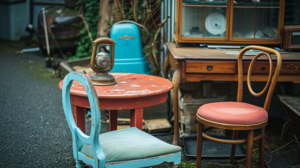
10. Beehive Supplies:
Develop sustainable beekeeping supplies that reduce waste and promote eco-friendly practices.
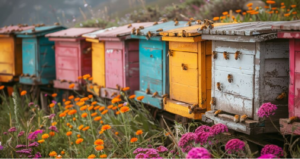
11. Sustainable Yoga Gear:
Create yoga accessories from eco-friendly materials, promoting a healthier and more sustainable lifestyle.
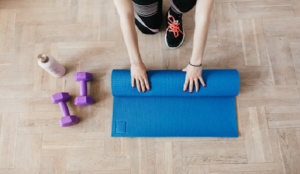
12. Eco-Friendly Pet Beds:
Create pet beds from sustainable materials like recycled wood and natural fibers.

13. Recycled Paper Products:
Use recycled paper to create eco-friendly products like notebooks, journals, and stationery.

14. Sustainable Outdoor Gear:
Design and manufacture outdoor gear like camping equipment and hiking accessories from sustainable materials.
15. Eco-Friendly Kitchen Tools:
Create kitchen tools like utensils and cutting boards from sustainable materials, reducing waste and promoting eco-friendly practices.
16. Sustainable Home Organization:
Design and manufacture home organization products like storage bins and shelves from sustainable materials.
17. Reusable Travel Accessories:
Make reusable travel accessories, like packing cubes and travel bags, from sustainable materials.

18. Natural Air Fresheners:
Develop natural air fresheners using essential oils and other eco-friendly ingredients to eliminate odors. Customize the scents to suit your preferences.

19. Upcycled Home Decor Items:
Transform old or discarded materials into unique and eco-friendly home decor items like vases, candle holders, and wall art.

20. Homemade Natural Cleaning Products
Create effective cleaning solutions with ingredients like vinegar, baking soda, and essential oils. These natural cleaners are free from harsh chemicals and safe for your family and pets.
21. Eco-Friendly Fabric Shopping Bags
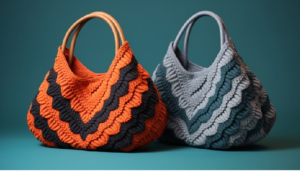
Reduce plastic waste by making your own fabric shopping bags. Use durable, washable fabric, and add personalized designs for a touch of style.
22. DIY Organic Bath Bombs
Pamper yourself with bath bombs made from natural ingredients like Epsom salts, baking soda, and essential oils. These are great for soothing sore muscles and relaxing after a long day.
23. Upcycled T-Shirt Tote Bags
Give old T-shirts a new life by transforming them into tote bags. This no-sew project is quick, easy, and perfect for beginners.
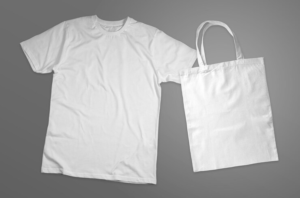
24. Natural DIY Lip Balm
Protect your lips with a homemade lip balm made from beeswax, coconut oil, and essential oils. Customize with your favorite scents and flavors.
25. Homemade Cloth Napkins
Replace disposable paper napkins with reusable cloth versions. Choose fabric patterns that match your dining decor and enjoy a zero-waste meal experience.

26. Eco-Friendly Laundry Detergent
Whip up a batch of eco-friendly laundry detergent using simple ingredients like castile soap, washing soda, and essential oils. It’s gentle on fabrics and tough on stains.
27. DIY Reusable Cotton Rounds
Switch to reusable cotton rounds for your skincare routine. These are perfect for applying toner, removing makeup, and cleaning your face.
28. Handmade Soy Candles
Create a cozy atmosphere with soy candles made from natural soy wax, cotton wicks, and essential oils. These candles burn cleanly and are free from harmful toxins.
29. Natural Wood Polish
Keep your wooden furniture looking its best with a homemade wood polish. Use ingredients like olive oil and lemon juice for a natural shine.
30. DIY Plant-Based Milk
Make your own plant-based milk at home with ingredients like almonds, oats, or soybeans. It’s a healthier, eco-friendly alternative to store-bought options.
31. Upcycled Glass Jar Storage
Repurpose glass jars into stylish storage solutions. Decorate with paint, fabric, or twine for a customized look.
32. Homemade Herbal Tea Blends
Blend your own herbal teas using dried herbs and flowers. Experiment with different combinations to find your perfect brew.
33. DIY Natural Deodorant
Stay fresh with a natural deodorant made from coconut oil, baking soda, and essential oils. It’s free from aluminum and other harmful chemicals.
34. Sustainable Furniture Polish
Give your furniture a natural shine with a sustainable polish made from simple ingredients like beeswax and olive oil.
35. DIY Cloth Diapers
Opt for reusable cloth diapers instead of disposable ones. They are better for the environment and gentle on your baby’s skin.

36. Handmade Compost Bin
Start composting at home with a DIY compost bin. Use recycled materials and follow a few simple steps to create rich, organic soil for your garden.
37. DIY Reusable Snack Bags
Make your own reusable snack bags from fabric and a few sewing supplies. These are perfect for packing snacks on the go and reducing plastic waste.
38. Homemade Natural Sunscreen
Protect your skin with a natural sunscreen made from ingredients like zinc oxide, coconut oil, and shea butter. It’s effective and free from harmful chemicals.
39. Upcycled Denim Projects
Transform old jeans into new, useful items like bags, coasters, or even quilts. Upcycling denim is a great way to reduce waste and create something unique.
40. DIY Natural Insect Repellent
Keep bugs at bay with a homemade insect repellent. Use essential oils like citronella, eucalyptus, and lavender for a natural alternative to chemical sprays.
41. Handmade Seed Paper
Create seed paper for planting or as eco-friendly gift tags. Embedded with seeds, these papers can be planted to grow flowers, herbs, or vegetables.
42. Sustainable Garden Markers
Label your garden plants with markers made from recycled materials. Get creative with designs that add a touch of charm to your garden.
43. DIY Zero-Waste Toothpaste
Make your own toothpaste with natural ingredients like baking soda, coconut oil, and peppermint oil. It’s an effective, zero-waste alternative to commercial brands.
44. Homemade Eco-Friendly Paint
Mix up eco-friendly paint for your home projects using natural pigments and ingredients. It’s safe, sustainable, and gives your walls a beautiful finish.
45. Reusable Makeup Remover Pads
Switch to reusable makeup remover pads made from soft, absorbent fabric. They’re washable, making them perfect for a zero-waste beauty routine.
Tips for Purchasing Sustainable Materials
Making sure your do-it-yourself projects are really sustainable and environmentally friendly requires careful selection of materials. The following is specific advice on where to find sustainable materials:
Select Ingredients That are Organic and Non-Toxic
Give organic and non-toxic ingredients top priority when choosing supplies for your projects. Chemicals that are bad for the environment and your health are absent from these materials.
For fabric crafts, for example, choose organic cotton; for cosmetics and cleaning goods, use natural components like beeswax, coconut oil, and essential oils.
Making Use of Upcycled and Recycled Materials
Materials that have been recycled or upcycled work really well for environmentally friendly do-it-yourself projects. In upcycling, undesirable or waste materials are turned into new, more valuable goods.
Tote bags and napkins can be made from old glass jars, for instance, or from worn-out clothes. Paper and fabric scrap recycling can also cut waste and conserve resources.
Support local vendors and Environmentally Conscious Companies
Source materials from regional vendors and companies that value sustainability whenever at all feasible. In addition to helping the local economy, this reduces the carbon footprint of shipping items over great distances.
Find retailers that reduce packaging waste by providing bulk buying choices. Many times, eco-friendly companies offer goods sourced ethically, fairly, and cruelty-free.
Research and verify Certifications
When purchasing products, look up and confirm certificates that show sustainable methods. Good markers of environmentally friendly products are labels like USDA Organic, Fair Trade Certified, and Global Organic Textile Standard (GOTS). These certificates guarantee that the materials satisfie particular social and environmental criteria.
Select Long-Lasting, Reusable Tools
Get long-lasting, reusable equipment for your do-it-yourself tasks. Select sturdy, multipurpose tools above one-time use goods. For instance, substitute cloth rags for throwaway paper towels and use stainless steel or wooden cutlery instead of plastic ones. With time, this strategy saves money in addition to cutting waste.
Tips for Extending the Life of Your Eco-Friendly Do-It-Yourself Projects
The best use of your environmentally friendly do-it-yourself items depends on following the right storage and care instructions. Here are some hints to help your works last longer:
Storage Done Right
Proper storage greatly increases the longevity of your do-it-yourself projects. Use sealed glass receptacles for DIY cleaning products to stop essential oil evaporating and contamination. To prevent heat and sunshine from degrading the chemicals in beauty products like lip balms and creams, store them in cool, dark locations.
Ordinary matainance
It takes routine maintenance to keep your do-it-yourself projects working and long-lasting. To stop stains and smells, for instance, wash reusable fabric objects like cloth napkins and tote bags often.
To stop more damage, check for any wear and tear and fix them right away. Every now and then, give wooden objects a natural polish to keep them looking good and lasting.
Use Reasonably Large Quantities
Using the right amounts of do-it-yourself supplies will also extend their useful lives. Use cleaning chemicals sparingly; a little goes a long way. To keep cosmetic products working and from going bad too soon, use the suggested dosages. This strategy maximizes the advantages of the items and prolongs their life.
Refresh and Rotate
Refreshing and rotating some do-it-yourself items might help keep them working as well. To refresh reusable beeswax wraps, for example, melt the wax a little in the oven and let it coat the fabric again. They become stickier and more useful again after this procedure. Comparably, to keep homemade cleaning solutions effective, replace their components on a regular basis.
Follow usage Instructions
The life of your do-it-yourself projects depends on your following the usage directions. To prevent contamination, for instance, use natural deodorants and skincare products exactly as directed. Concentrated cleaning solution dilution done correctly guarantees that the products operate well without damaging surfaces.
Using Do-It-Yourself Projects in Daily Life
You can easily and profitably include do-it-yourself projects into your everyday schedule. This is how to incorporate it into your way of life:
First, Start small
Start with a couple easy jobs to prevent becoming overburdened. Select initiatives, such creating natural cleaning products or reusable shopping bags, that fit your interests and needs. Take on increasingly difficult assignments as your confidence and experience grow.
Build a Do-It-Yourself Schedule
Plan regular DIY tasks into your calendar. Allot particular times each week to create or craft environmentally friendly items. This schedule will enable you maintain your dedication and make do-it-yourself a second nature.
Share and Motivate
Introduce your do-it-yourself projects to loved ones. In addition to raising knowledge of sustainable living, this inspires others to take on environmentally beneficial projects. Organize craft or do-it-yourself workshops to create a group of like-minded people.
Journal Your Travels
Journal or blog about your do-it-yourself efforts and developments. This can be a source and a motivating tool for anybody else interested in sustainable living. Talk about your highs and lows, and offer advice and how-tos for your favorite projects.
Transition Gradually
Use your do-it-yourself substitutes for your present products as they wear out or run out. Adopting a sustainable lifestyle is made easier by this slow shift, which also relieves the need to make drastic changes all at one. As your store-bought cleaning supplies run out, for example, switch to homemade ones, or as your present cosmetic products run out, start using your own.
Enjoy the Process
Ultimately, relish the process of making and using your do-it-yourself projects. Accept the pleasure of knowing something you made with your own hands is beneficial to the environment. Making environmentally friendly things brings you happiness and contentment, that can greatly strengthen your resolve to live a sustainable lifestyle.
Including these advice into your do-it-yourself project will enable you to make durable, environmentally friendly goods and smoothly include sustainable lifestyles into your daily activities.
Conclusion
Creating 30 Eco-Friendly Sustainable DIY Products You Can Easily Make at Home is a fulfilling way to contribute to a greener planet. Each project not only reduces waste and promotes sustainability but also adds a personal touch to your home and lifestyle. Embrace the joy of crafting and make a positive impact on the environment with these eco-friendly DIY ideas.
FAQs
What are the benefits of making eco-friendly DIY products?
Making eco-friendly DIY products helps reduce waste, allows control over ingredients, promotes sustainability, and can be a fun and rewarding hobby.
Where can I find materials for eco-friendly DIY projects?
You can source materials from local suppliers, eco-friendly stores, or repurpose items you already have at home.
Are homemade cleaning products as effective as store-bought ones?
Yes, homemade cleaning products made from natural ingredients like vinegar and baking soda can be just as effective as commercial cleaners without the harmful chemicals.
Can I customize the DIY projects to my preferences?
Absolutely! One of the joys of DIY projects is the ability to customize them with your favorite ingredients, scents, and designs.
How do I ensure my DIY products last a long time?
Proper care and storage are key. Follow instructions for use and maintenance to ensure your DIY products remain effective and durable.
What is the easiest eco-friendly DIY project to start with?
DIY reusable beeswax wraps are a great beginner project. They are simple to make and immediately useful in reducing plastic waste in your kitchen.


[…] consumption, choosing sustainable products made from recycled materials or with minimal packaging, and actively recycling or upcycling items […]